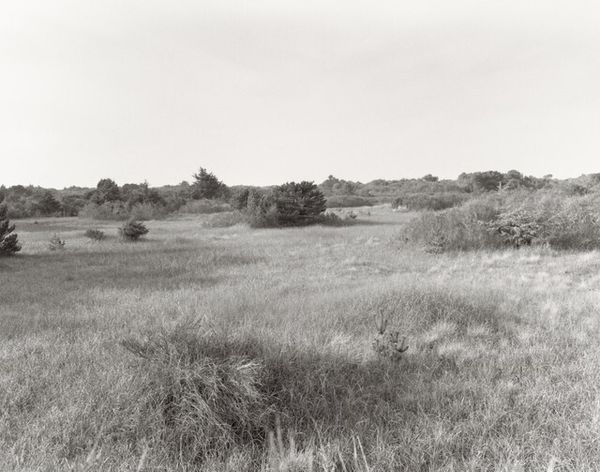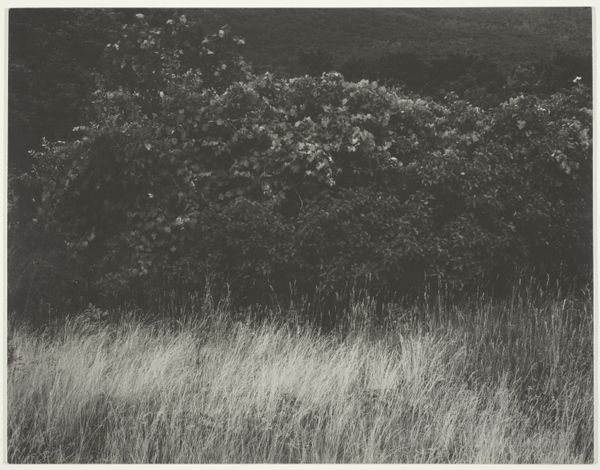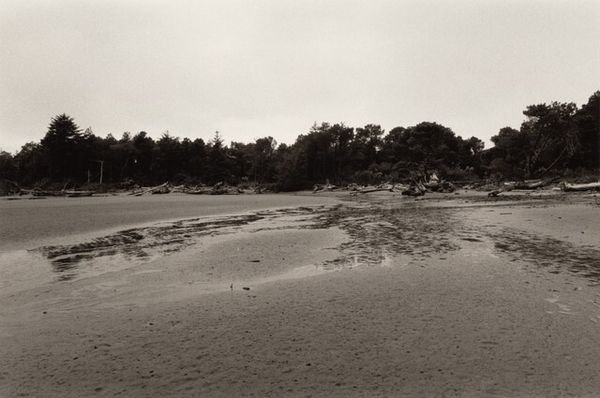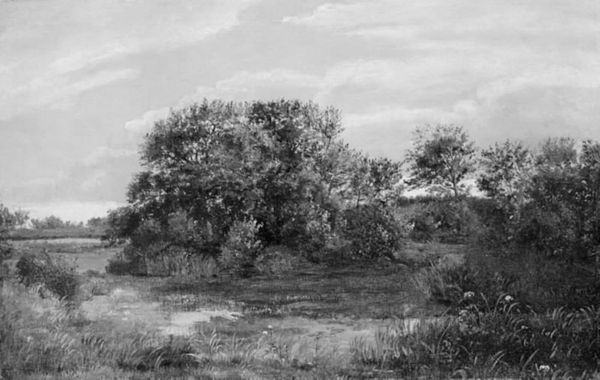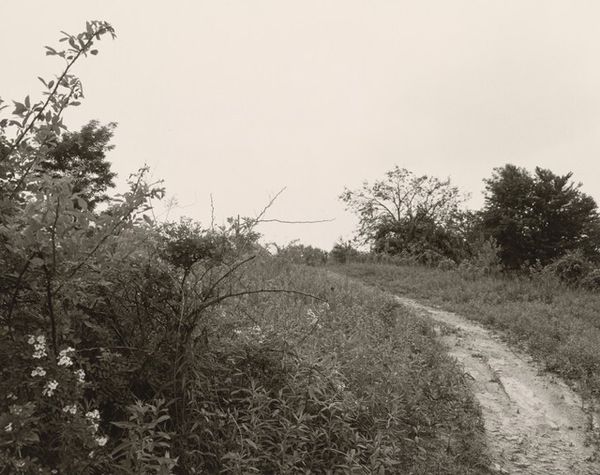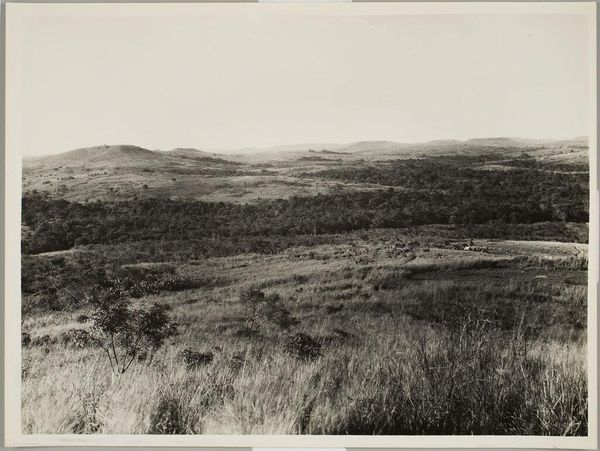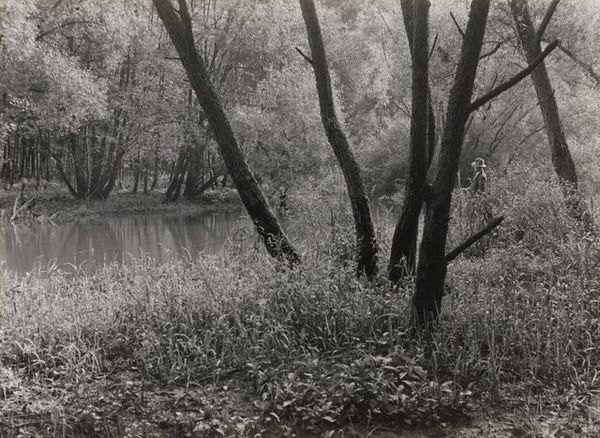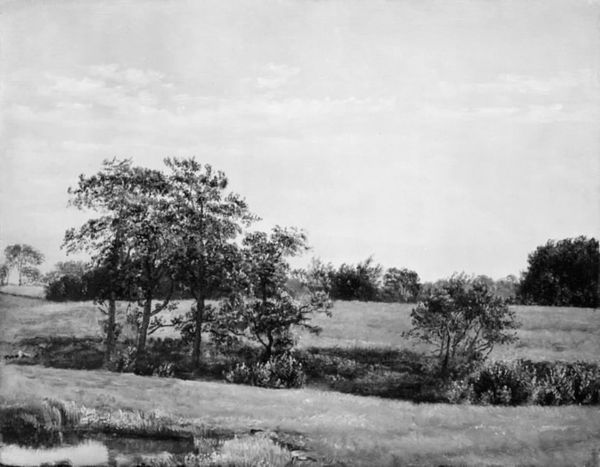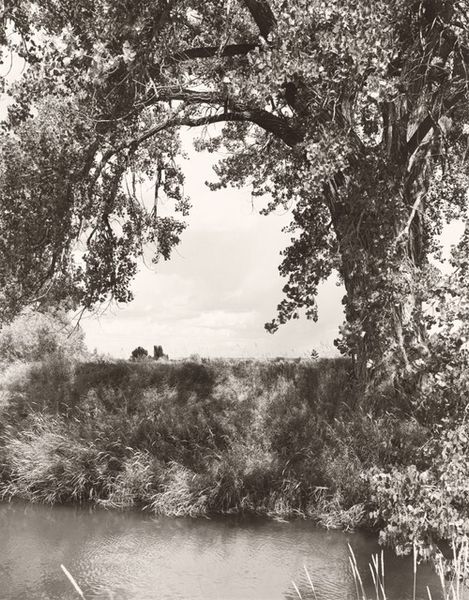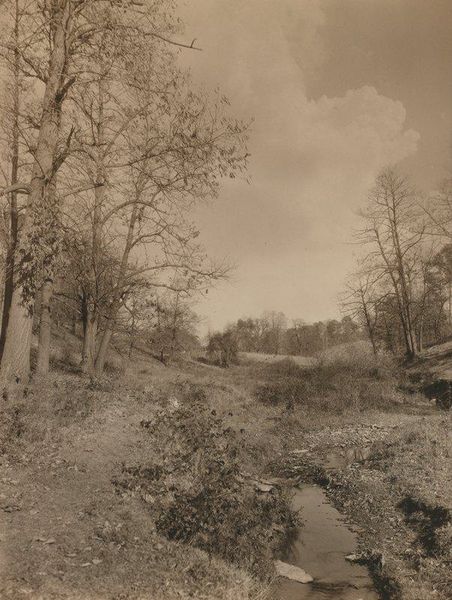
photography, gelatin-silver-print
#
black and white photography
#
landscape
#
black and white format
#
photography
#
gelatin-silver-print
#
monochrome photography
#
monochrome
#
realism
#
monochrome
Dimensions: image: 22.86 × 28.58 cm (9 × 11 1/4 in.) sheet: 27.94 × 35.56 cm (11 × 14 in.)
Copyright: National Gallery of Art: CC0 1.0
Curator: Looking at this black and white photograph, I’m immediately struck by its stillness, almost as if time itself is holding its breath. Editor: Indeed. This is "The Interior of the Spit" by Robert Adams, made in 2015. It's a gelatin-silver print, embodying Adams’ consistent return to landscape as a register for human impact and potential redemption. Curator: Gelatin-silver, a classic choice for capturing subtle gradations of light and shadow, but what I find interesting is how Adams treats the negative. His process emphasizes tonality and texture. This treatment offers a soft rendition. You can almost feel the breeze rustling through the tall grasses. Editor: It invites reflection on ecological concerns and the role of humanity within these spaces. How are we reading and marking landscape? What social narratives are implicit here? Consider that many landscape photographers at the time engaged with ideas of sublime, untouched nature, but here Adams reveals a decidedly altered territory. Curator: Right. It pushes against romantic landscape tropes through its photographic process and the depicted environment. Adams highlights a subtle form of environmental manipulation, perhaps a space cultivated for a very specific, commodified aesthetic, almost performative even in its naturalness. It challenges the division of landscape, situating "nature" within complex social and economic processes. Editor: The seemingly simple composition—the clear delineation between the grassy foreground and the slightly wooded rise—belies a more profound complexity when read intersectionally, thinking through histories of land use, extraction, and control. Are we really free from human impact in places like this? Where does wilderness end and cultivated landscape begin? Adams resists the visual celebration of sublime wilderness, a popular visual approach which helped propel mythologies about manifest destiny. Instead, his composition resists such a claim. Curator: His images often serve as cautionary tales, reminding us of the delicate balance—or imbalance—between human activity and the natural world. Looking at it now, I see a reflection of our conflicted relationship with nature. Editor: Yes. What appears neutral is, in fact, loaded. That, to me, is where the image speaks most powerfully.
Comments
No comments
Be the first to comment and join the conversation on the ultimate creative platform.
